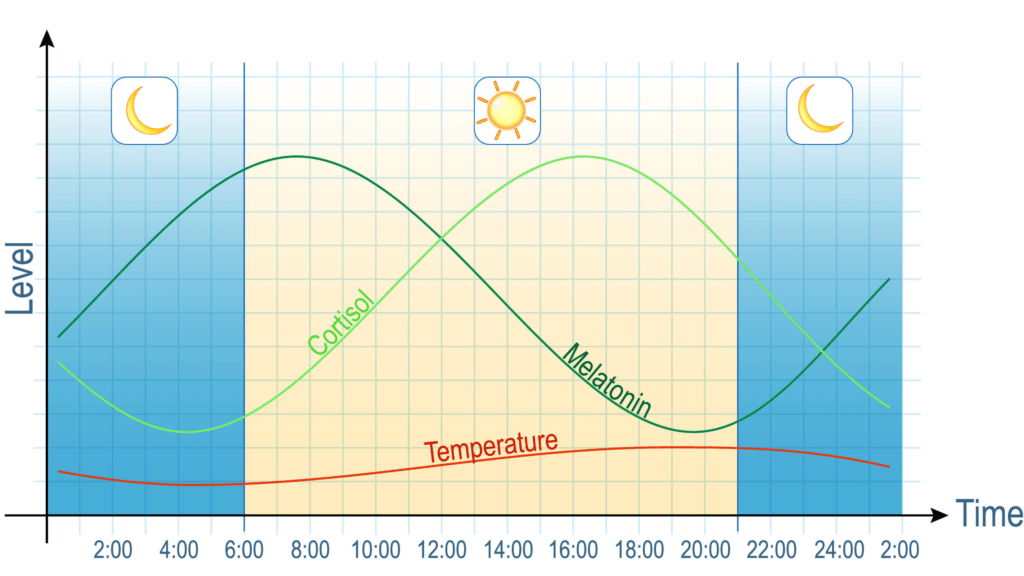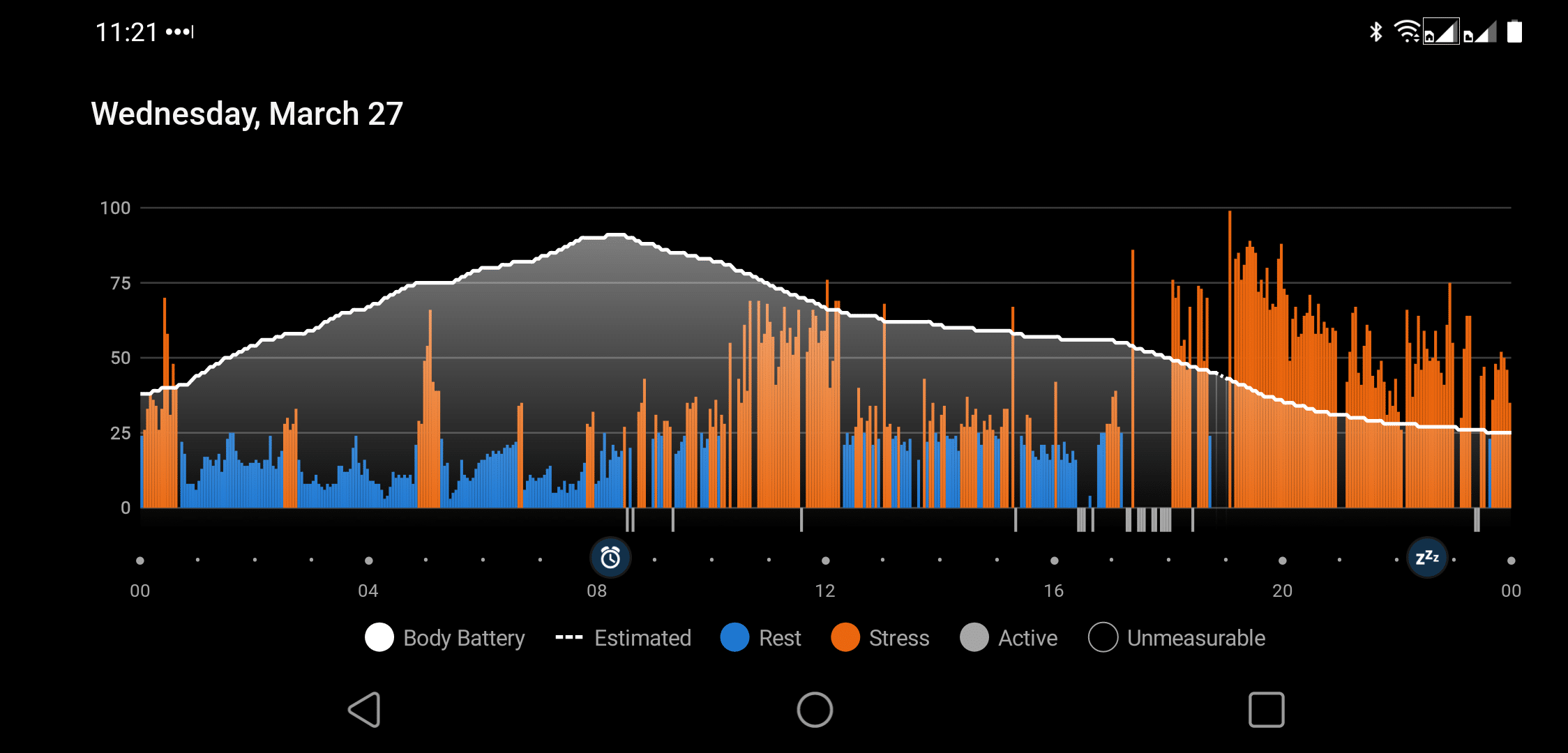Cortisol, often dubbed the stress hormone, plays a pivotal role in managing stress, blood sugar levels, metabolism, inflammation, and memory formation. Keeping cortisol levels within a normal range is essential for overall health, aligning with the common reasons individuals seek to understand these levels better 1.
What are considered normal cortisol levels?
Normal cortisol levels range from 10 to 20 micrograms per deciliter (mcg/dL) in the morning, dropping to under 10 mcg/dL by late afternoon or evening. These values can vary based on the lab and the specific time of day the test is conducted.
Key Insights on Cortisol Levels
- Diurnal Variation: Cortisol levels peak in the early morning and decline throughout the day.
- Stress Impact: Acute stress can temporarily increase cortisol levels.
- Symptoms of Imbalance: High cortisol may lead to weight gain and muscle weakness, and low levels can cause fatigue and weight loss.
- Testing Methods: Blood, saliva, and urine tests provide different insights into cortisol levels over time.
- Lifestyle Influence: Regular exercise, mindfulness practices, and optimal sleep can help manage cortisol levels.
- Age and Gender: Cortisol levels can be affected by one’s age and gender, requiring personalized assessments.
- Health Conditions: Disorders like Addison’s disease and Cushing’s syndrome are linked with abnormal cortisol levels.
Understanding Cortisol Levels: What’s Normal?
When it comes to cortisol, timing is everything. Consider cortisol the body’s alarm clock; it wakes you up with peak levels in the early morning hours—around 8 a.m., give or take—boasting normal cortisol levels between 5 and 23 mcg/dL or 138-635 nmol/L.
The story changes as the day wears on, with evening levels at 4 p.m. usually hitting the lower range of 3 to 13 mcg/dL or 83-359 nmol/L. Like that friend who’s only a morning person when they smell coffee, cortisol has its routine.

Cortisol doesn’t play favorites; these normal value ranges vary slightly from lab to lab. A single blood sample might unlock the secrets of your stress, metabolism, and immune response. Why? Because cortisol is that pivotal player in your body, managing stress, controlling blood sugar, and even fighting inflammation.
| Time of Day | Normal Cortisol Levels (mcg/dL) | Normal Cortisol Levels (nmol/L) |
|---|---|---|
| Early Morning (6-8 AM) | 10-20 | 276-552 |
| Afternoon (4 PM) | 3-10 | 83-276 |
| Midnight | <5 | <138 |
The Significance of Cortisol Tests
Getting to the bottom of cortisol’s daily diary involves a few different tests: mainly, the cortisol blood test, saliva test, and urine test. Each of these tells a story. A blood test is like a snapshot, capturing a moment in time, usually the morning when cortisol is strutting its stuff.
The saliva test, however, offers a sneak peek into the day’s fluctuating levels, allowing multiple performances to be captured. And the urine test provides a 24-hour recap, showing the highs and lows in your cortisol levels.
| Test Type | Sample Required | Time of Day | Primary Use |
|---|---|---|---|
| Blood Test | Blood Sample | Morning | Instant Snapshot of Cortisol Levels |
| Saliva Test | Saliva Sample | Throughout the Day | Fluctuations during Day and Night |
| Urine Test | 24-hour Urine Collection | Any Time | Average Over 24 Hours |
Factors Influencing Your Cortisol Levels
Imagine your favorite coffee shop altering its opening hours based on the unpredictable tastes of its patrons. This is similar to the havoc wreaked in our bodies with abnormal cortisol levels due to unpredictable elements like stress, steroids, or hidden health conditions.
Stress, which is a common element that influences our daily lives, causes a surge in cortisol. In the same vein, steroids have a brief yet impactful role in this narrative, causing cortisol levels to fluctuate above or below the normal range.
This interplay is further complicated by conditions like Cushing’s syndrome, which acts as the antagonist, driving cortisol levels to dangerously high extremes. On the other hand, Addison’s disease adopts a more minimalist strategy, relegating cortisol to the sidelines.
Managing and Monitoring Cortisol Levels
Managing cortisol levels can be quite a challenge. However, it’s not impossible. The initial step involves identifying the symptoms of imbalance. These could either be exhaustion from low cortisol or sudden, unanticipated weight gain from high cortisol.
Surprisingly, minor adjustments to your lifestyle can significantly impact regulating this crucial hormone. Establishing nightly rituals to enhance sleep, incorporating mindfulness exercises to reduce stress, and maintaining a regular workout schedule can form a balanced approach.

However, there may be instances when these lifestyle modifications are not enough to restore balance. In such scenarios, medical advice is required. Frequent cortisol tests provide a real-time overview of how your body is managing life’s stresses. This information allows medical experts to craft personalized treatment plans that help bring equilibrium to your endocrine function.
Personal Thoughts
In my ongoing endeavor to handle my stress, the comprehension, and monitoring of my cortisol levels became a vital part of my self-care routine. This interest wasn’t solely founded on academic or scientific intrigue; it was about discovering a concrete method to quantify and eventually alleviate the daily pressures that life presents.
This journey to balance my cortisol levels was an intensely personal one. It mirrored not just a desire for healthier living but also a journey towards regaining tranquility amidst life’s turmoil. By sharing these insights, I feel like I’m reaching out to others who are also navigating these choppy waters, with hopes of providing some truly effective navigational aids.
Frequently Asked Questions
How do cortisol levels change throughout the day?
Cortisol levels naturally fluctuate during a 24-hour period. Levels peak in the early morning, generally within the first hour after waking up, which is usually around 6 to 8 a.m., and then decline throughout the day, reaching their lowest point around midnight. This pattern is known as the diurnal rhythm or cortisol curve.
Can stress affect my cortisol levels?
Yes, stress can significantly affect cortisol levels. Acute stress can temporarily increase cortisol to help the body manage the stressor. However, chronic stress can lead to consistently elevated cortisol levels, which can be harmful over time, potentially leading to conditions like chronic fatigue, impaired immune response, and other health issues.
What symptoms might indicate abnormal cortisol levels?
Symptoms of abnormal cortisol levels can vary depending on whether levels are too high or too low. High cortisol might lead to weight gain, high blood pressure, muscle weakness, and mood swings. Low cortisol may cause fatigue, low blood pressure, weight loss, and muscle weakness. Any of these symptoms warrant consulting a healthcare provider.
How does aging impact cortisol levels?
Aging can impact cortisol levels, with studies suggesting an increase in cortisol production as one gets older. This can be due to various factors including changes in kidney function, decreased sensitivity to cortisol, and an overall increase in the prevalence of health conditions that affect cortisol. However, this trend may vary greatly among individuals.
- Cortisol Test: Understanding High vs. Low Cortisol Levels (webmd.com)[↩]




